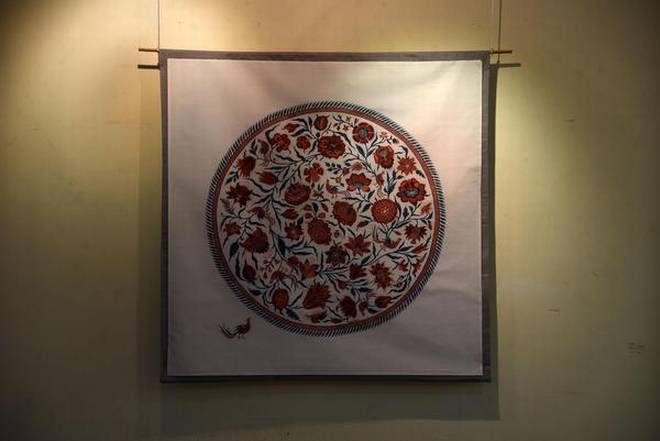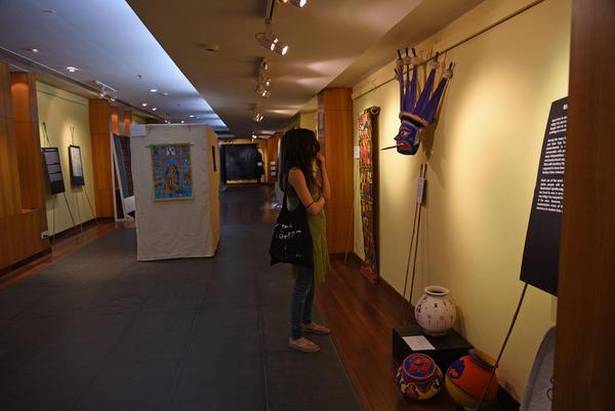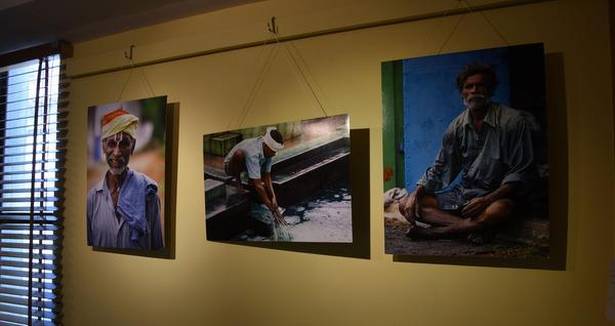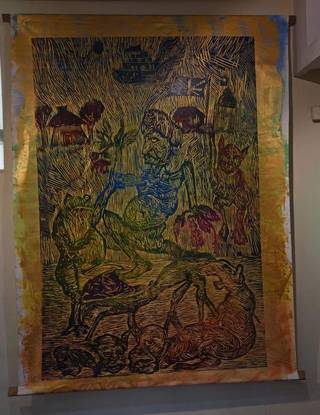The dye that brings the world together
The Greeks called it indikon and the Romans, indicum, eventually indigo in English, all implying the same — from India. True indigo, Indigofera tinctoria, a flowering plant with 750 sub-species is found in the tropics. It produces this distinctive natural dye from its leaves, and is the only organic source of the colour blue in nature. And the Indian subcontinent being the prime supplier of true indigo, the dye was named thus by the Greeks.
Then, Arab merchants took the dye to the Mediterranean and Europe and its rarity gave it a regal aura. Jenny Balfour-Paul, dye specialist and an authority on indigo, says the term ‘royal blue’ came from here.
Balfour-Paul was at Kolkata’s Indian Council for Cultural Relations to speak at Indigo Sutra, a fascinating symposium held there in early November.
As Gasali Adeyemo from Nigeria demonstrated the unique adire tie-dye technique from his country, Sufiyan Ismail Khatri from Kutch demonstrated ajrakh, the block printing that’s done on both sides of the fabric. Adeyemo spoke of how the patterns in adire are tribe identifiers, also working as messages that convey specific ideas and thoughts, easily recognisable to compatriots.
Amrita Mukerji, the woman behind Sutra Textile Studies, the non-profit society that organised the event, was in Malaysia in the late 80s-early 90s and decided she wanted to showcase India as something more than just the country that provided wealthy Malays with plantation workers. So she began to exhibit, using personal and other collections, Indian textiles, jewellery, art, literature and music.
It was in Nigeria that Mukerji had fallen in love with indigo, finding the local shops stacked with bolts in vibrant indigo hues in adire patterns. It was there she discovered checked cloth called George that looked just like Indian lungi patterns. And later learnt that the name came from Fort St. George in Chennai; the same cloth was known as Bleeding Madras in other places.
And the twain met
In 2000, Mukerji met Balfour-Paul. At the time, Balfour-Paul had just come across the journals of a Victorian adventurer and fellow indigo-lover, Thomas Machell.
Inspired by Machell’s writing, which she published as Deeper than Indigo, Balfour-Paul set out to trace his footsteps; and Mukerji travelled with her to the places in Bengal where Machell had lived as an indigo planter.
Monoleena Banerjee, an independent textile designer and consultant, also accompanied them.
Superimposing a map made by Machell on to a contemporary road map, they found four of Machell’s nil kuthis or indigo houses in Nadia district. Three of them were in ruins, while the fourth had been taken over by the local Hare Krishna society.
All these threads came together at the symposium, held most appropriately in the centennial year of the Champaran Satyagraha. Wonderfully curated by Londoner Simon Marks, textile designer and natural dyer, who spends a lot of time in Jaipur and Kutch, there were seminars, workshops, discussions, film shows, a bazaar, and excursions to weaving and dyeing centres.
Participants came from across India, Africa, Japan, Thailand, Jordan, Salvador, Great Britain and Bangladesh to exhibit their skills and share knowledge, playing their part in promoting and reviving indigo, the oldest natural dye known to man.
A scale model of an indigo dye manufacturing unit, a replica of the one in London’s Kew Gardens, made for a fascinating study. There were collections of indigo-hued and inspired works of art, to be worn or displayed, as well as indigo fabric installations, including a maze-like room separator by Kolkata designer Santanu Das. Natural dye artist Ajit Das’s exhibits emphatically announced the range of this dye between hues of blue, purple and black.
We are reliably informed there are more blue jeans on this planet than there are people, and Jesus Ciriza Larraona, a Spaniard, is currently working with dye manufacturers in Tamil Nadu and elsewhere to develop organic dye for Levi’s jeans. He also manufactures organic indigo clothing for Auroville.
Ruby Ghuznavi, a reputed crafts researcher who has done much to revive organic dyes in Bangladesh, was a keynote speaker here. Living Blue, a unit of CARE, Bangladesh, works to empower weavers, indigo farmers and dye-makers in Rangpur in the northern part of the country. It specialises in exports of kantha and indigo-dyed fabrics, using the Japanese Shibori technique, for personal wear and home furnishings.
Clearly, the increasing use of organic products in a polluted world has led to the current revival of interest in sustainable indigo. And, as it did centuries before, the dye is bringing the world together.
The author, who lives in Kolkata, keeps rediscovering it, often with wonder.
source: http://www.thehindu.com / The Hindu / Home> Entertainment> Art / by Patrick Sanjiv Lal Ghose / November 04th, 2017



